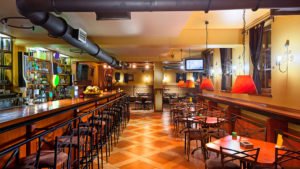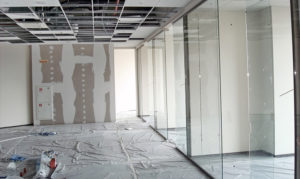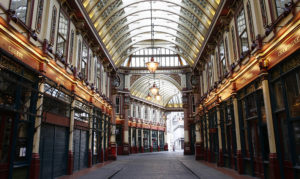What is a Nonconforming Use or Structure?

The term ‘tenant improvement’ or ‘tenant fit-out’ refers to making alterations to an existing commercial space so that it can better fit a tenant’s needs. For example, an existing office space may be adjusted to suit a new tenant by removing partitions, updating restrooms, and adding a new HVAC system. Changes of this scope must comply with the current building code, unless the building is nonconforming, in which case it may not be possible to meet the code and/or zoning standards.
Code and zoning nonconformance often exist in older buildings. Changes made to nonconforming structures are permitted but must receive approval from the local building official and planning director; these are often called code modifications or grandfathering. Below we have outlined some instances of nonconforming structures that deviate from the typical code and zoning requirements.
Structures Built Prior to Zoning Changes

A building may have conformed to a zoning ordinance at the time it was established, however due to later changes in zoning, it no longer conforms now.
Example – A restaurant moved into a shopping center in Palmdale, California. Several years later, a zoning amendment restricted land use in the shopping center to retail only.
In this instance, the restaurant became a nonconforming use because it is no longer located in an area that it is zoned for. The restaurant is still permitted to continue its operations because it was built prior to the zone change; however, it may face limitations or restrictions to later modifications and expansions.
Structures Built Prior to Building Code Changes

A structure may have conformed to the existing building code requirements at the time it was constructed, however at a later point in time it no longer conforms as a result of code changes.
Example – An office space in Las Vegas, Nevada was built in the 1980s and has not been altered since it was built. Therefore it may not be up-to-date with all ADA requirements such as accessible bathroom stalls, proper sized entryways, and ramps to enter the building.
In this example, the building is considered nonconforming however it is still permissible to operate in its current state if it is occupied by a private company rather than the general public. However, if the building occupants wish to make specific changes and improvements, they may be required to update the rest of the building to current code. This decision, dependent on many different factors, will be made by the local jurisdiction on a case-by-case basis.
Historic Buildings
 Some buildings are deemed historic by the state or local authority due to historic significance or value. These buildings are typically older and therefore nonconforming as they were built prior to current building code requirements.
Some buildings are deemed historic by the state or local authority due to historic significance or value. These buildings are typically older and therefore nonconforming as they were built prior to current building code requirements.
Example – A shopping center in Philadelphia, Pennsylvania was built in the late 1800s and is considered historic. A developer recently purchased the property and wishes to make minor updates prior to renting out the space to tenants.
The new owners of the shopping center may find that it’s difficult to make interior or exterior improvements to the building without altering some of its historic features. Therefore, they will likely be prohibited from making many of these changes by the local city council, historic preservation committee, and/or planning department.
Making improvements to a nonconforming building is a complex process and will typically require experts to help navigate the different requirements. Permit Advisors’ project managers conduct in-depth due-diligence to identify all records and ordinances pertaining to a project’s location. This process allows us to identify the building codes and zoning ordinances specific to a property so that we can advise our clients on the required permits and department approvals specific to their project. To receive more information on permitting a nonconforming building, contact us.
Resources:
California’s State Historical Building Code. (2017, Jan 1). California Building Standards Commission. Retrieved from: https://preservation.lacity.org/incentives/californias-state-historical-building-code
Existing Buildings. (2015). International Code Council. Retrieved from: http://media.iccsafe.org/news/icc-enews/2016v13n16/2015bce_comm_p9-10.pdf
Historic Buildings. (2017, August). 2018 International Existing Building Code. Retrieved from: https://codes.iccsafe.org/content/IEBC2018/CHAPTER-12-HISTORIC-BUILDINGS
Nonconforming Uses, Structures, and Lots. (2016, Nov 8). The Municipal Research and Services Center (MRSC). Retrieved from: http://mrsc.org/Home/Explore-Topics/Planning/Development-Regulations/Nonconforming-Uses-Structures-and-Lots-Regulatio.aspx
